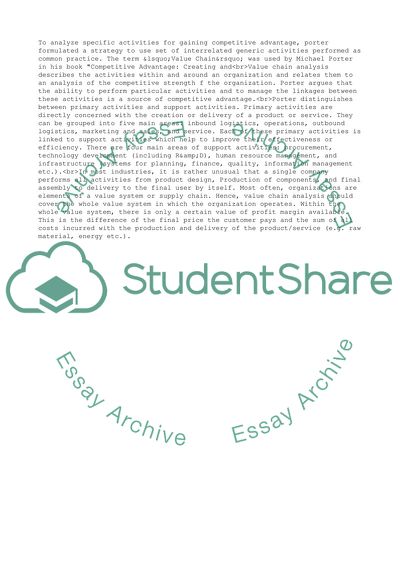Cite this document
(Sector Matrix Framework Essay Example | Topics and Well Written Essays - 2000 words - 3, n.d.)
Sector Matrix Framework Essay Example | Topics and Well Written Essays - 2000 words - 3. Retrieved from https://studentshare.org/business/1722118-using-an-extended-example-critically-examine-whether-the-sector-matrix-framework-gives-a-better-strategic-understanding-of-product-markets-than-the-concepts-of-product-or-commodity-chains
Sector Matrix Framework Essay Example | Topics and Well Written Essays - 2000 words - 3. Retrieved from https://studentshare.org/business/1722118-using-an-extended-example-critically-examine-whether-the-sector-matrix-framework-gives-a-better-strategic-understanding-of-product-markets-than-the-concepts-of-product-or-commodity-chains
(Sector Matrix Framework Essay Example | Topics and Well Written Essays - 2000 Words - 3)
Sector Matrix Framework Essay Example | Topics and Well Written Essays - 2000 Words - 3. https://studentshare.org/business/1722118-using-an-extended-example-critically-examine-whether-the-sector-matrix-framework-gives-a-better-strategic-understanding-of-product-markets-than-the-concepts-of-product-or-commodity-chains.
Sector Matrix Framework Essay Example | Topics and Well Written Essays - 2000 Words - 3. https://studentshare.org/business/1722118-using-an-extended-example-critically-examine-whether-the-sector-matrix-framework-gives-a-better-strategic-understanding-of-product-markets-than-the-concepts-of-product-or-commodity-chains.
“Sector Matrix Framework Essay Example | Topics and Well Written Essays - 2000 Words - 3”, n.d. https://studentshare.org/business/1722118-using-an-extended-example-critically-examine-whether-the-sector-matrix-framework-gives-a-better-strategic-understanding-of-product-markets-than-the-concepts-of-product-or-commodity-chains.


